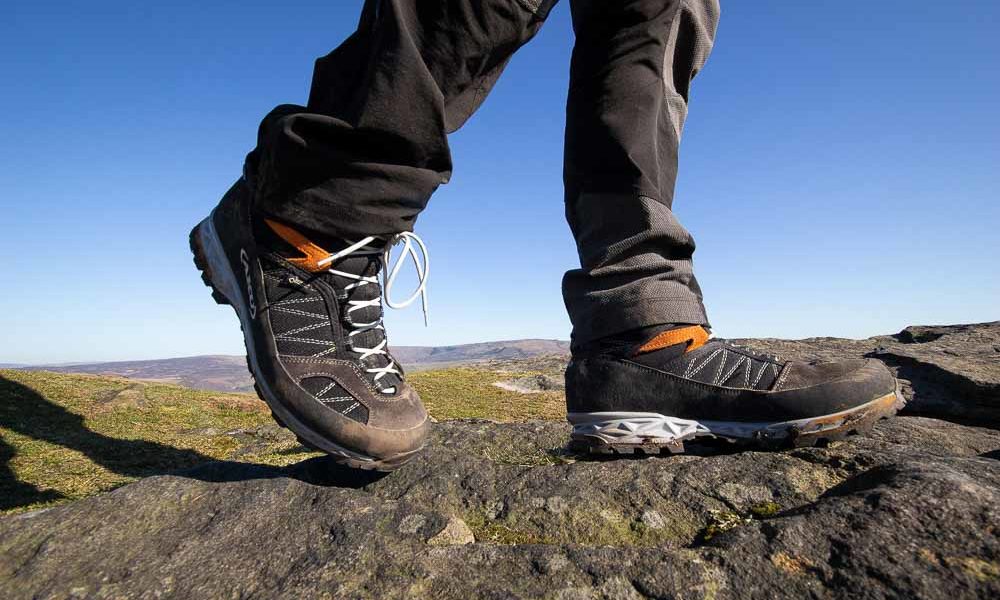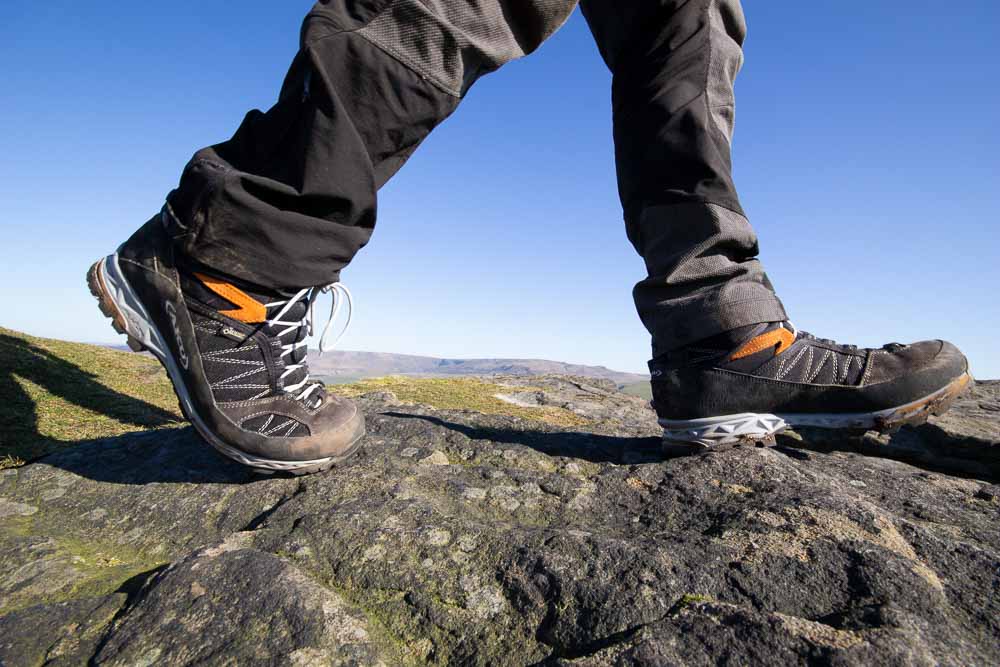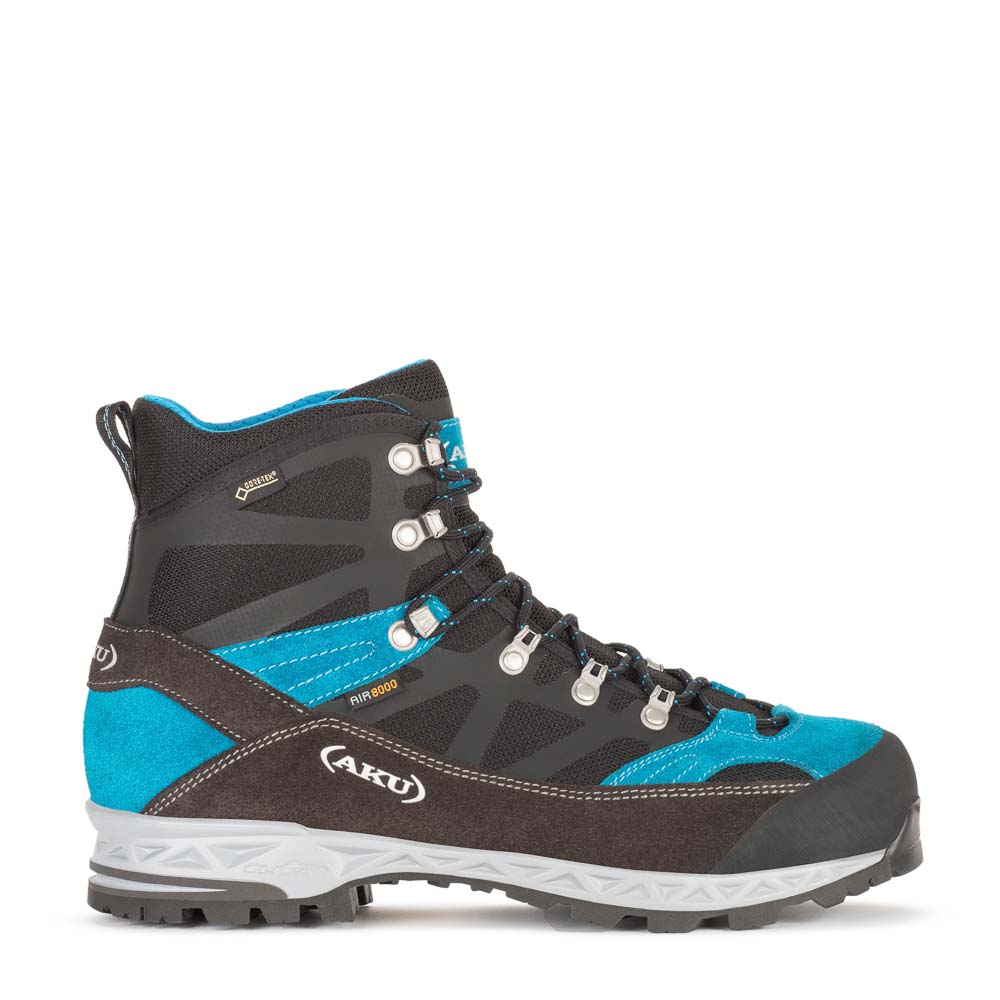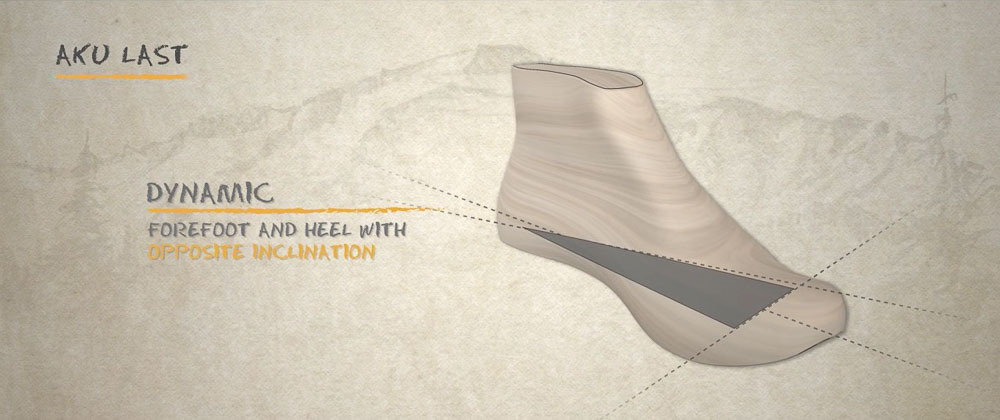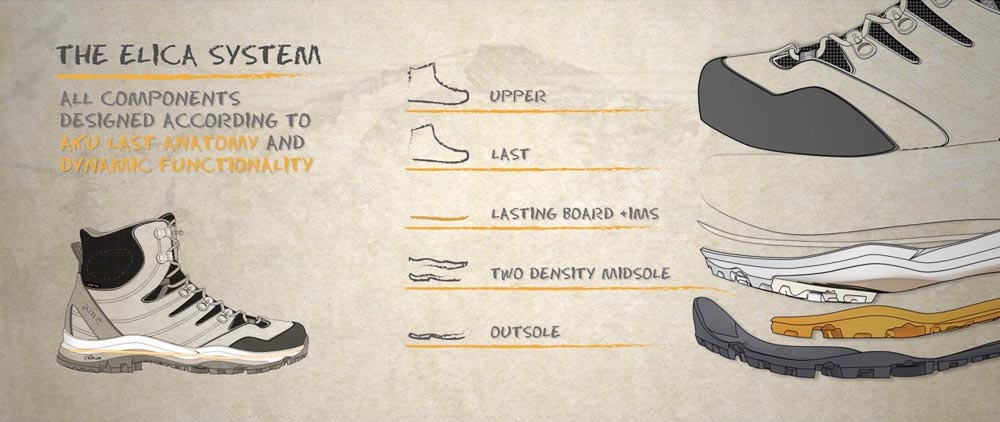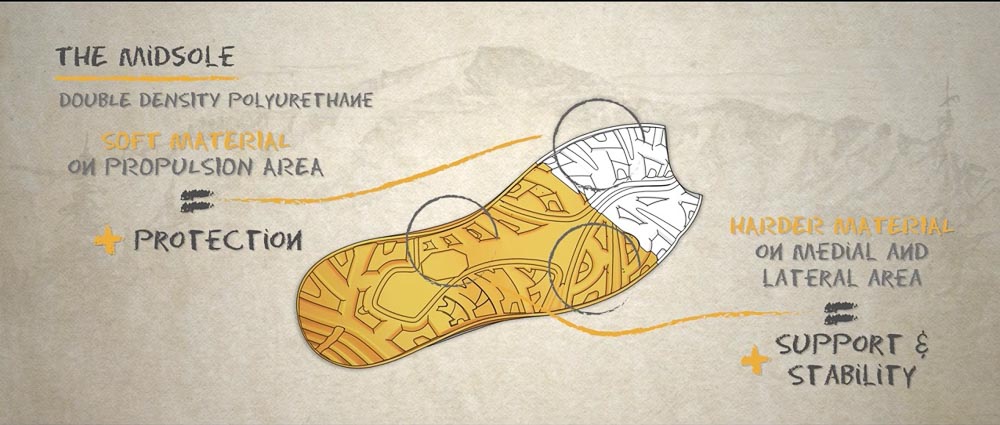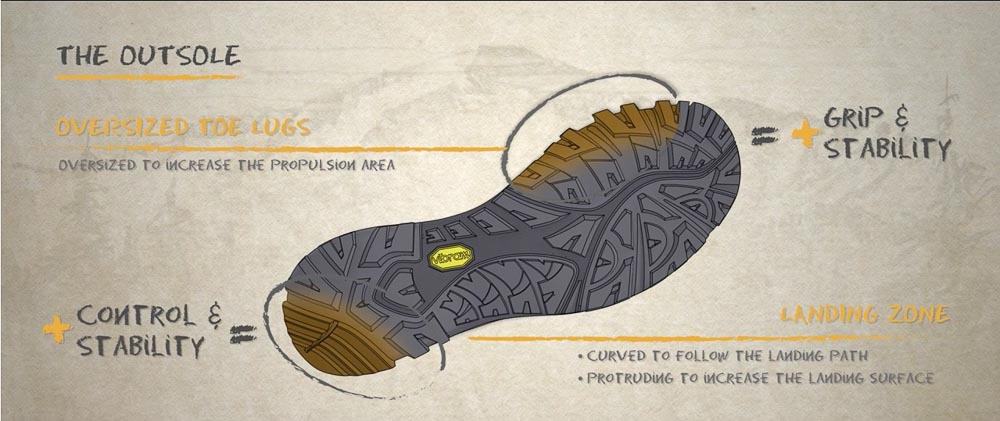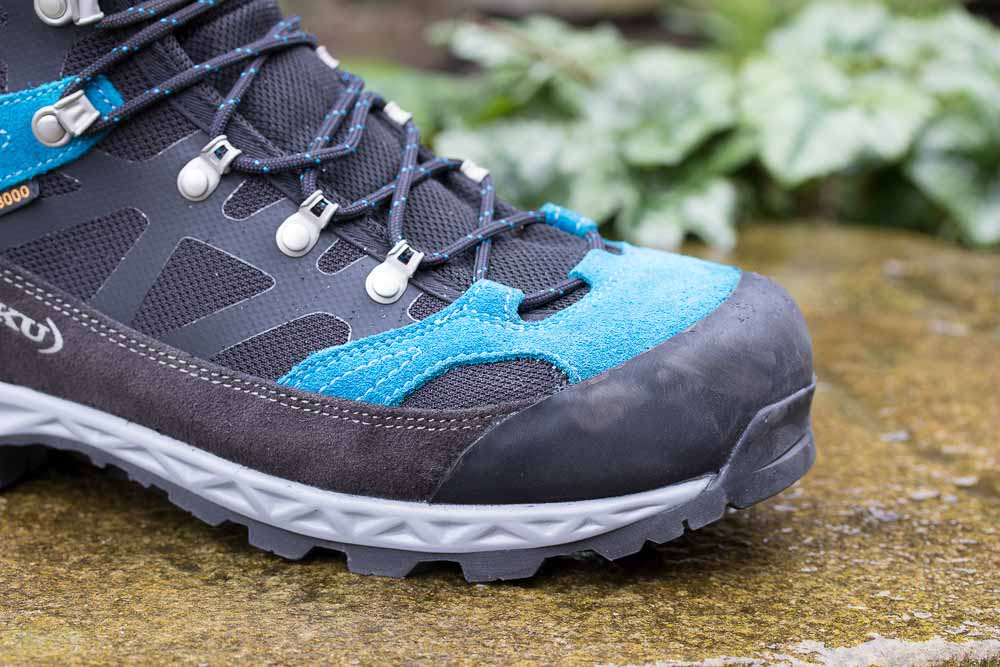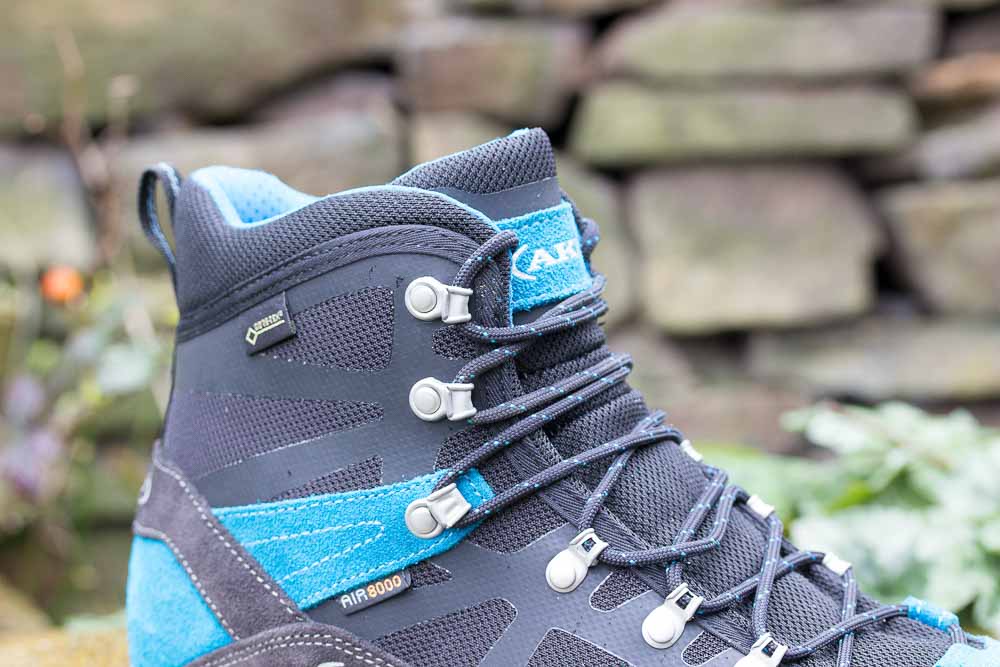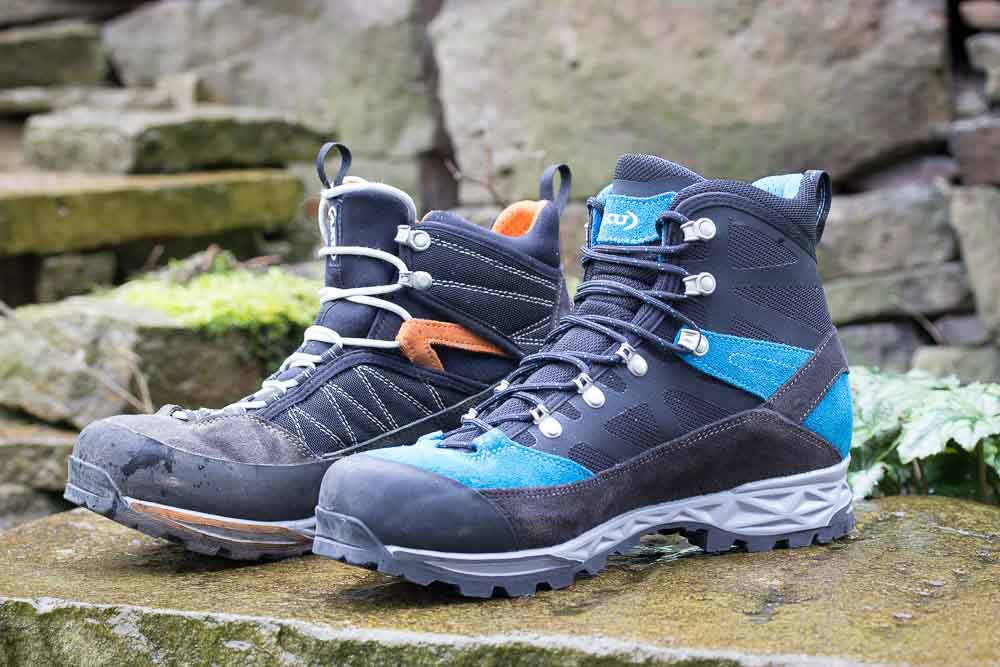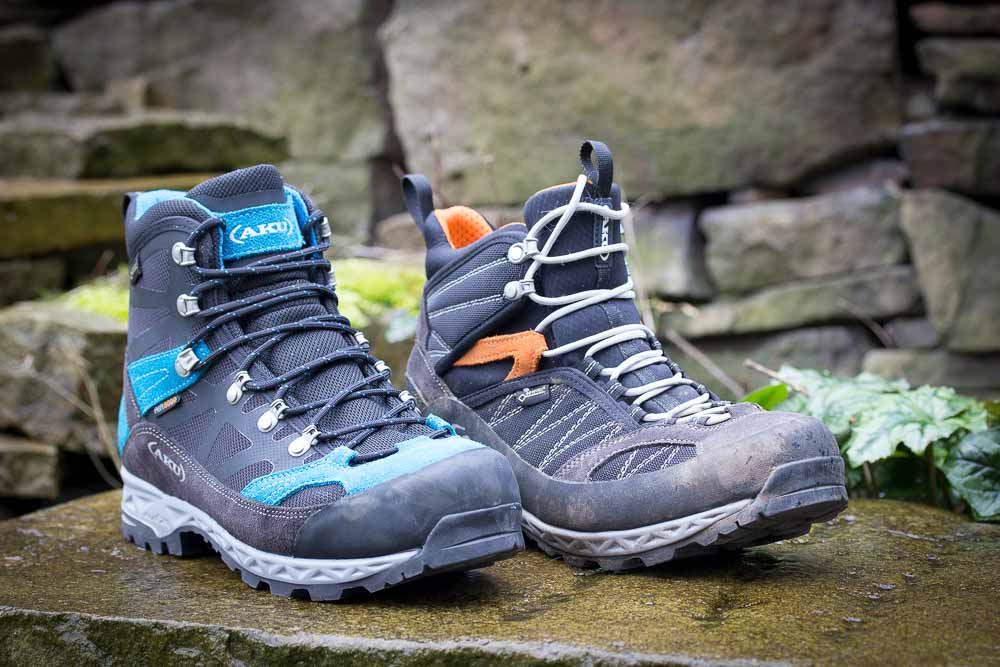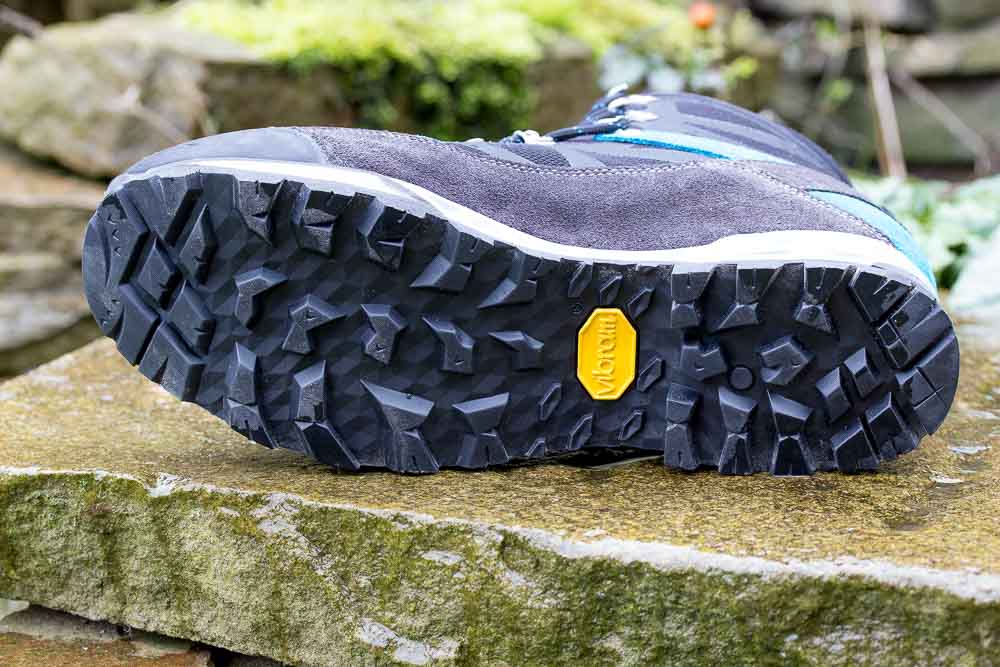Just arrived and new for spring 2019 is the northern Italian-developed AKU Trekker Pro GTX boot and it should be worth considering if you’re after a fabric-based, three-season all-round hiking and trekking boot.
I’ve just been reviewing a selection of 10 three-season boots for the next issue of Trek & Mountain, and one of the boots that impressed me most was the AKU Tengu Lite. It’s an interesting, mostly fabric, lightweight walking boot that combines a lightweight, flexible upper with a decently stiff sole, that hits a sort of sweet-spot between support, cushioning and flexibility. It also has a surprisingly fluid walking action that I couldn’t quite put a finger on, except to say that it has a surprisingly fluid walking action. But it turns out there may be a rational explanation after all.
Elica what?
The Tengu Lite – and the new Trekker Pro GTX – both use AKU’s ‘Elica Natural Stride System technology’. To which you’re probably thinking yada, yada, yada, more hype. And maybe you’d be right, except that the Tengu Lite had that subtle ‘just right’ feel to its walking action. And, if you doubt this sort of thing matters, bear in mind that Nike has produced a running shoe called the ‘4%’ precisely because its chassis is claimed to provide energy return that’s 4% better than conventional running shoes.
You see where I’m going with this: footwear chassis construction can make a significant difference. I’m not just talking about springiness or energy return, but just aligning your foot correctly for effective walking.
And that is what the Elica Natural Stride System is claimed to do. AKU says it’s been lab-tested and proven to ‘guarantee a more even distribution of foot pressure when walking’. How’s that? According to AKU, the lasting of the boot – its basic shape -together with the insole board, midsole and outsole are all carefully designed and shaped to even out pressure throughout the foot-strike and toe-off action, er, walking action maybe and to make for a more effective walking action.
So, rather than being flat, the components of the sole unit are angled to promote a particular walking action. The cushioned heel is inclined outwards to help with heel strike, it says here, while the insole board is inclined inwards to ‘support a natural toe-off’. Even the lugs on the outsole are subtlly slanted to help the boot work with your natural walking action. In simple terms, the heel and forefoot are inclined in opposite directions because apparently this works best for a natural stride.
If you want more detail, check out AKU’s video about the system:
It may of course all be psychological, but whatever the truth it does seem to work and it works whether you understand the technical details or not. And the new Trekker Pro GTX has it too.
More conventional take
Otherwise the boot is a more conventional lightweight hiker than the Tengu Lite. It doesn’t have that boot’s stretchy, wrap-around ankle cuff system, using a conventional ankle cuff that’s around an inch higher and is about 140g per boot heavier in a size 43. The sole unit is appreciably stiffer longitudinally for greater support too, but the fit is a similarly happy medium and first impressions are that the walking action feels similarly together. In other words, it looks like an interesting option for anyone who wants the Tengu Lite’s intuitive walking feel, but with a high, more supportive ankle and a stiffer sole unit all round.
Other spec details include AKU’s Air8000+ fabric and suede uppers with a lightweight welded PU film reinforcement, Vibram sole unit and Gore-Tex lining. Price is around a fiver less than the Tengu Lite at £194.95 and weight for a single size 43 boot is 755g. Full review to follow, but whatever the reality of the Elica tech, if you’re in the market for some three-season hiking boots, both AKU models are well worth a try on.
More info at: www.aku.it


